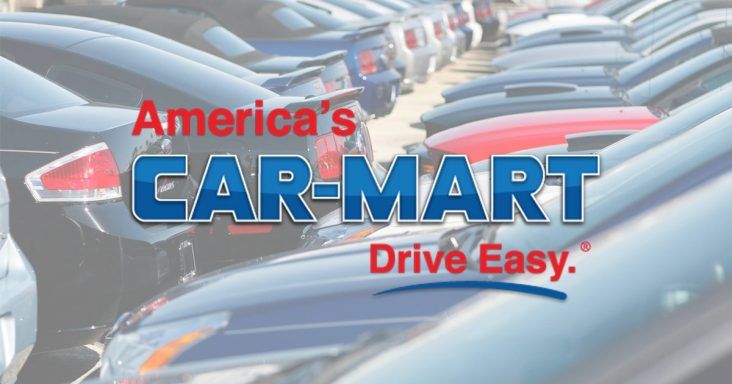Car-Mart earnings rise 52%; record revenue in second quarter
by November 16, 2020 6:55 pm 559 views

Rogers-based America’s Car-Mart profit increased by 52.7% and revenue hit a record $223 million in the second quarter of fiscal 2021 as the buy here, pay here used car dealer widely beat earnings and revenue expectations.
After the markets closed Monday (Nov. 16), the company reported earnings for the period ending Oct. 31 increased to $21.18 million, or $3.05 per share, from $13.87 million, or $2 per share. Revenue rose 17.4% to $223.36 million, from $190.31 million.
Car-Mart beat expectations for earnings by 70 cents per share and revenue by $23.28 million, based on a consensus of four analysts.
Through two quarters, earnings have risen by 38.7% to $40.74 million, or $5.88 per share, from $29.37 million, or $4.21 per share, and revenue has increased by 13.6% to $411.27 million, from $362.18 million.
In the second quarter, vehicle sales rose 1.9% to 14,022, from 13,763 in the same period in 2019. Average retail sales price increased 15.3% to $13,365, from $11,589. Same-store sales growth increased to 12.8%, from 12.2%. Net charge-offs declined to 4.7%, from 6.1%. Accounts over 30 days past due fell to 2.5%, from 3.5%. Active customers rose by 6.4% to 83,945. Net finance receivables increased by 15.1% to $519.81 million, from $451.6 million.
As of the end of the second quarter, the company had 150 dealerships, up by five from 145 in the same period in 2019.
“Our disciplined execution and ongoing focus are propelling the business forward at an accelerating pace,” said Jeff Williams, president and CEO. “At the same time, significant investments in key areas are laying the groundwork for future growth. Notwithstanding the tight used vehicle market, especially at the lower price points, we generated a meaningful increase in revenues. The market we serve is large and fragmented, and consumer expectations and shopping preferences are changing. We have a healthy paranoia about change and are committed to re-inventing the business in order to adapt and prepare us for long-term market leadership. Our business continues to both generate cash and increased borrowing capacity while maintaining a conservative balance sheet, enabling us to think big about our place in the world.”
Williams said the company continues to invest in the customer experience, inventory procurement and recruiting and training. Improvements in these areas are expected to lead to increased traffic and productivity. Technology and systems upgrades support these investments, contributing to growth, he said.
“For example, the centralization of certain functions dovetails with the advantages of our localized branch structure; the ability to make key customer decisions locally is important to our success,” Williams added. “We are aggressively addressing changes in consumer buying preferences by building an efficient, seamless, digital and customer-friendly sales process that compares favorably with alternatives. Further, as our infrastructure strengthens, we will aggressively market our lower total cost of ownership advantage.”
Williams expects to continue to see growth at existing dealerships. The company will put priority on capital spending to gain market share in areas in which the company serves. The company has opened two dealerships so far in fiscal 2021 and is expected to open two more: stores in Edmond, Okla., and Norman, Okla. It opened its 150th dealership in Chattanooga, Tenn., on July 31. The company has dealerships in 12 states throughout the south-central United States.
“We are proud to be growing while simultaneously building an infrastructure that will support a much larger business,” Williams said. “This is possible largely because of the commitment of our associates and the power of our business model.”
Vickie Judy, chief financial officer, said the increase in the average retail sales price combined with a $4.1 million increase in interest income contributed to the overall revenue increase. Sales volumes were impacted by the tight supply of vehicles at lower prices, and this resulted “in a lack of an affordable alternative for some of our customers,” she said. “This impacted our productivity per dealership.”
The company’s selling, general and administrative expenses have returned to pre-pandemic levels, said Judy, noting that this is a reflection of the “commitment to have a strong infrastructure to support a growing customer base.
“We did have some nice leveraging of these expenses at 16.5% of sales compared to 16.9% for the prior year comparable quarter,” she added.
Shares of Car-Mart (NASDAQ: CRMT) closed Monday at $101.96, up $4.35, or 4.46%. In the past 52 weeks, the stock has ranged between $129.70 and $35.18.
USED MARKET UPDATE
Wholesale auction sales of vehicles up to eight years old declined by 2% to 80,000 vehicles for the week ending Nov. 8, from the previous week, according to a used vehicle report by J.D. Power. It was the second consecutive week of slowing sales after four weeks of flat sales. Sales for the week ending Nov. 8 were about 19% lower than the typical level for the period.
Wholesale auction prices decreased for the week, marking the 12th consecutive week of price declines, according to the report. Prices fell by about 1% and have fallen by 8% since the peak in August. The prices are 25% higher than the low in April and 6% higher than the start of March.
Prices are expected to continue to fall through the remainder of 2020 “as pent-up demand has been satisfied and pandemic-related macro-economic headwinds increase,” the report shows. “By year’s end, prices are expected to be greater than pre-virus levels. It is important to note, however, that while the outlook is relatively optimistic, there remains a great deal of uncertainty surrounding the effect of new virus outbreaks, the potential for another round of federal stimulus and overall employment conditions. Given these unknowns, a heightened degree of market volatility should be expected.”
